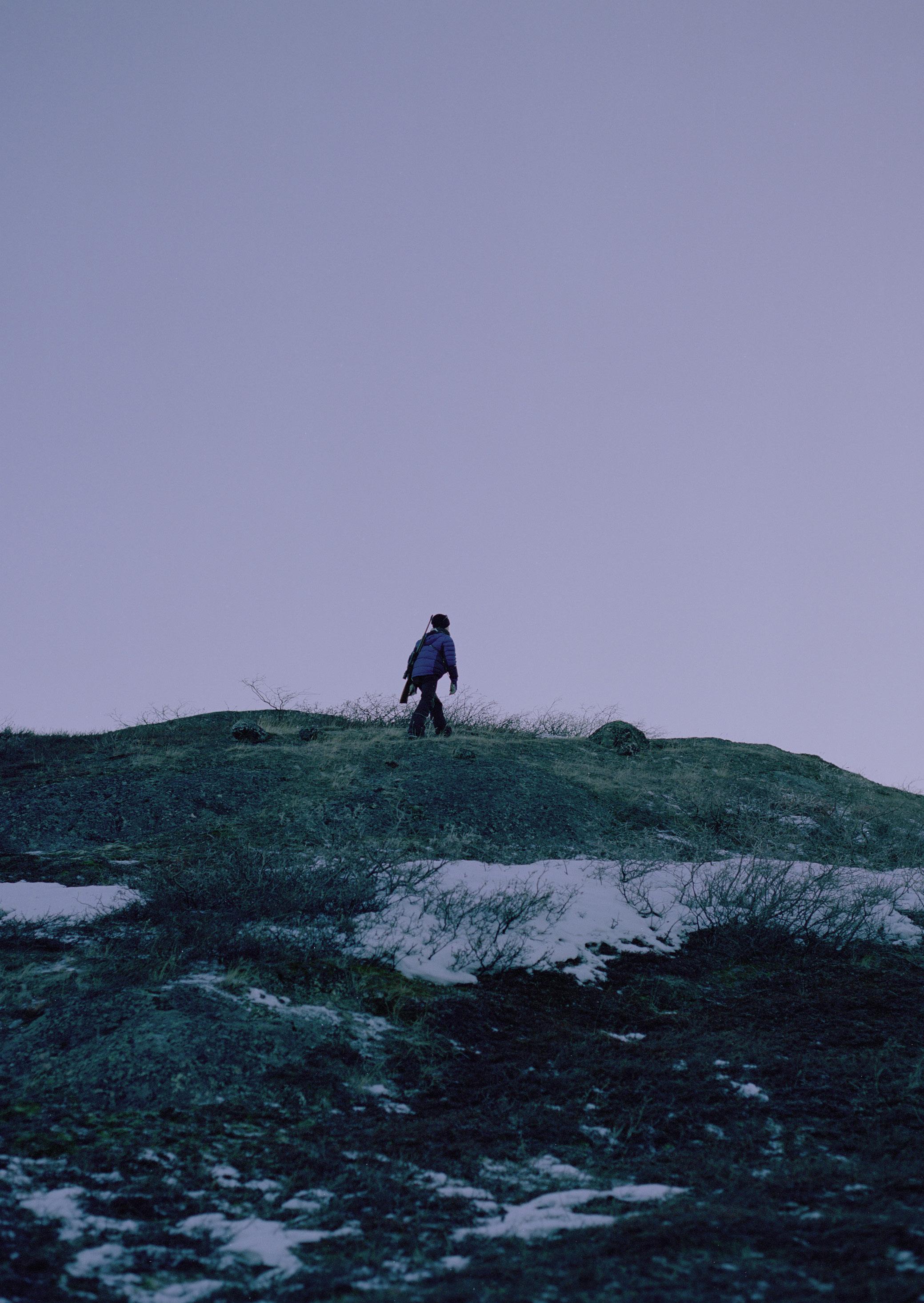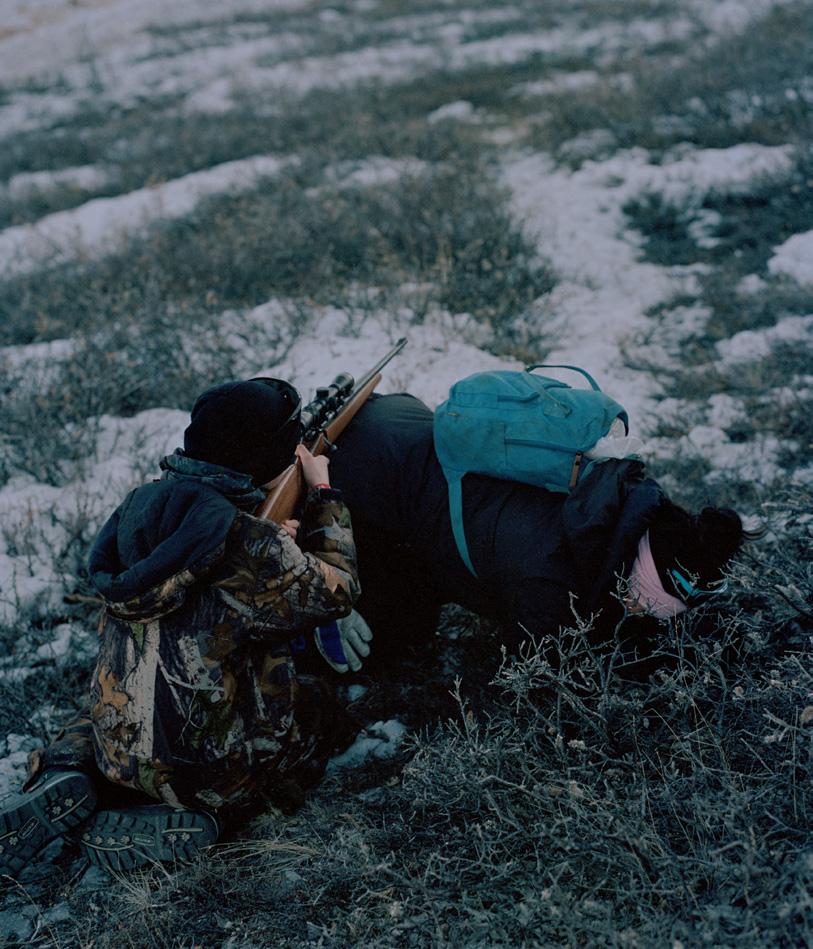
6 minute read
RELATIONS
Group exhibition at Copenhagen Photo Festival June 2023
Relations is a documentary photography exhibition made by a group of 11 photojournalism students from the Danish School of Media and Journalism (DMJX).
Our nations’ cultures and religions define and shape the lives that we live. Be it through our relationship to each other, to ourselves, to the society or to the nature that surrounds us. Through ten separate stories, the photographers in this exhibition document various human relations and ways of dealing with life.
All stories are made within the field of documentary photography. This means that no pictures have been digitally altered, no items have been added or removed in the pictures. The peoples’ stories and the situations are real. The reportage pictures have been photographed as the photographers experienced the situations and no moments have been staged.
BENJAMIN
Surrounded by mountains and tundra, shrouded in snow and sunshine, lies Kangerlussuaq. A small settlement of just 500 people. It is tucked away at the bottom of a 170-kilometer-long fjord that stretches all the way out from the west coast of Greenland. The inhabitants have a strong connection to their surroundings and are in many ways dependent on nature. Both for their survival and well-being. Nature is a business, a playground and, for some, also spiritual. In early March 2023, I went to Kangerlussuaq to feel nature and meet those who use it in different ways.
Dogs and sleds
In the southern part of Kangerlussuaq, furthest away from housing and inhabitants, the local sled dogs live. The homemade fences and sheds divide the sled dogs so that the owner can keep track of each pack. The dogs watch me calmly as I walk past. Long metal chains hold them inside the pens, so they can only run in a circle 10 meters in diameter. It seems strange to have dogs on chains like that, but there must be a reason for it, I think.

I understand the reason when all the dogs suddenly become aware of a sound. It sounds like an old engine and wheels against snow and gravel, but it is not yet possible to see where the sound is coming from. Then a big red Toyota Land Cruiser appears at the top of a nearby hill. All the dogs turn their noses up and start howling. The sounds of the dogs, which almost sound more like screaming than barking, drown out all other sounds. The four-wheel drive car rolls up to the kennel and out steps Fransisca with a big smile.

Fransisca David Olsen is 24 years old and grew up in Kangerlussuaq. She has had sled dogs since she was 11 years old, and during the winter months she takes tourists on trips. She has been doing this for over 10 years. For her, the dogs are both a business and something she enjoys.
They are expensive to run and it has to be worthwhile to have them.
“I wish I had a bit more time to get out into nature by myself and experience winter in a different way than with tourists. I really like to get out and enjoy nature, but I also get tired of meeting new people all the time”, she tells me when we talk about her work.
70 Years Old And 25 Musk Oxen
I meet Johanne Beck and her cousin Abel outside their house. They live in a big blue house in Kangerlussuaq for three to four months of the year. Normally they live in the town of Sisimiut, which is on the coast. They are in Kangerlussuaq for work, and Johanne has invited me to work in her and her cousin’s shed.
“When I turn 70 years old this summer, my family and I will walk from Sisimiut to Kangerlussuaq. It’s a tradition and we’ve done it when I turned 50, 60 and now 70.”
She says it as if it’s nothing, but shortly before, she told me that this particular trip lasts six to eight days and stretches through 170 kilometers of mountainous landscape. They must be made of different stuff up here.
In a small white shed on the south side of Kangerlussuaq, the two cousins work together. From the outside, it looks like all the other white sheds and containers in town, but as we enter the door, I’m greeted by a sight I don’t exactly see every day.

The shed is insulated, which in this case is not to retain heat, but to keep it cold. The room is below freezing. It is essentially a chest freezer the size of a small apartment.
The sparse lighting from the few bulbs on the ceiling makes the room yellowish and dim. In addition, there is no doubt that it is only made for Johanne and Abel to work in.
I get in the way just by standing in the corner and watching. That’s how crowded it is. And it smells of animals. Large pieces of musk ox lie neatly in rows, sorted according to which piece of meat on the body it is and where it is to be delivered. All hunters in Greenland have a quota of how many musk oxen they can shoot. Johanne and Abel have shot a total of 25 this year.
“Nature has great, great powers. You must respect it, you have to listen and learn from it - and you have to be a bit humble”, Johanne tells me. She doesn’t elaborate but when a woman in her seventies who has spent her whole life in nature tells me this, I can’t help but listen and nod in recognition.


Mom and son
Paornanguak Gundersen picks me up after she gets off work as a receptionist at one of the city’s hotels. We are going hunting with her 13-year-old son, Milas. Several times a week, the two of them go hunting. In summer they hunt reindeer and musk oxen, in winter grouse. They do it to fill the three chest freezers they have at home, but mostly they do it for the sheer joy of it.
“Nature... It’s just healing. Here, nature is our psychologist. You get energy, joy and peace from nature. And you enjoy the fact that it’s so close out here. You trust the nature,” Paornanguak tells me.
It’s not long before Milas spots four grouse not far from us. They quickly load Milas’ rifle. The rifle is too heavy for Milas to hold and aim at the same time, so he uses Paornanguak’s back to hold it still. She squats down, he puts the rifle on her, and within a few seconds there is a loud bang, followed by complete silence.
“One, two, three... You got one, Milas!”, Paornanguak shouts in excitement after counting that there were three grouse that took off and one didn’t. Milas bursts into cheers and runs off dancing to retrieve his prey.
It felt simultaneously absurd and wonderful to experience hunting in Greenland’s beautiful, vast hinterland, and to see a 13-year-old boy doing TikTok dances on a mountainside after shooting a bird with a rifle that is almost longer than he is tall.

Bathed in the last sunlight of the day, they walk back to the car with their prey packed tightly in five-liter plastic bags. Tomorrow they will go hunting again. Some children go to soccer in the afternoon. Some parents stay home on the couch after work. Milas and Paornanguak hunt together, and they do it as often as they can.

Stories from religion of nature
Nature is everywhere in Adam Lyberth’s home. The walls are plastered with paintings and photographs of the Greenlandic landscape, lakes, ice and mountains. The huge window in the living room faces the icy fjord, sparkling and shimmering in the perpetual sunlight.
On a shelf above one of the windows in the living room are a couple of tupilaks. Many tourists may know tupilaks as a fun souvenir to bring home from Greenland. For Adam, they mean something completely different. Tupilak means ancestral soul and is a small carved figure that protects its owner from enemies. Usually made from animal bones but Adam’s are made from stone. He got them from a Greenlandic artist and they mean a lot to him. They give him energy. Both physically and mentally.
In Kangerlussuaq, nature is a resource and a way of making money. It can be used in many ways. Adam is a tour guide in the settlement. Therefore, he also uses nature as a source of income. But for Adam, nature is much more than a way to earn money. When he was 17 years old, he discovered his ability to talk to his ancestors and to fairies.
“When I was 17 there was a snow avalanche in the town, I lived in. Several people were buried under the snow and were impossible to find. Suddenly, a glowing fairy came out of the darkness and led me to a snow pile. I dug and dug and found an elderly man. If it hadn’t been for that fairy, he would have died. I have saved over seven lives with the help of the fairies.”
For several hours we talk about nature and the stories that come with it. He talks about encounters with villagers who perished in snow avalanches three thousand years ago, how he can communicate with animals through music, and about nature religion in Greenland.

“Greenlanders were very spiritual. Christianity took that away from us,” Adam says when I ask if nature is important to Greenlanders. For Adam, it is important that the stories and belief in the powers of nature are not lost.












